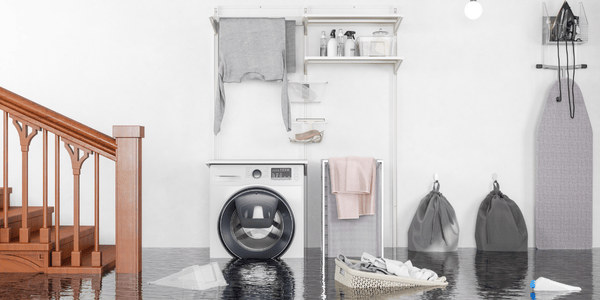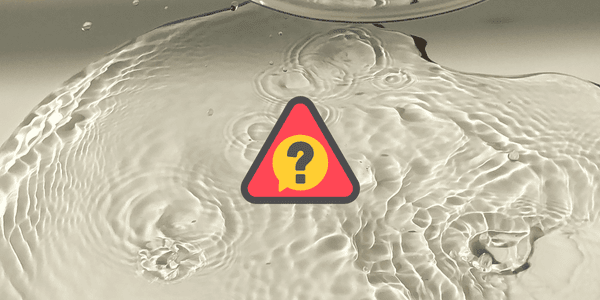
Water damage and flood damage are two terms that homeowners and business owners dread hearing. While both can wreak havoc on your property, understanding their differences is crucial for protecting your home or business, managing insurance claims, and reducing financial and emotional stress. If you live in areas like San Antonio or its surroundings, this knowledge could mean the difference between a smooth restoration process and a drawn-out recovery.
Let’s dive into the essential differences between Water Damage vs. Flood Damage and equip you with the information you need to handle both confidently.
Understanding Water Damage vs. Flood Damage

Not All Water Comes from the Same Source
- Water Damage: Typically results from internal issues like burst pipes, overflowing sinks, or malfunctioning appliances. These incidents often start small and escalate if unnoticed.
- Flood Damage: Stems from external events such as heavy rains, river overflows, or hurricanes. FEMA defines flood damage as “a partial or complete inundation of at least two acres or two properties caused by natural water sources.”
Water damage often results from controllable factors within a property, while flood damage is typically beyond the homeowner’s control. Recognizing this distinction is essential for taking the right preventive and remedial actions.
Why This Difference Matters More Than You Think
- Insurance Coverage: Standard homeowner’s insurance often covers water damage but excludes flood damage. Flood damage requires a separate policy, even for homes outside designated flood zones. Without proper coverage, you may face significant out-of-pocket expenses during recovery.
- Response Plans: Water damage can often be addressed with plumbing fixes and drying, while flood damage may demand structural assessments and extensive remediation.
This difference impacts everything from how you prepare your property to how you approach insurance claims, making clarity crucial.
Recognize the Signs of Damage
Spotting Water Damage
Water damage can progress unnoticed until it becomes a major issue. Watch for:
- -Bubbling or peeling paint, especially near plumbing fixtures.
- -Unexplained water stains on ceilings, walls, or floors.
- -Persistent musty odors indicating hidden mold or mildew.
- -Warped wood, sagging drywall, or damp carpets.
Early detection can prevent costly repairs. Regular inspections in less-visible areas, like under sinks or in attics, are key.
Signs of Flood Damage
Flood damage is often more severe and visible:
- -Standing water in basements, living spaces, or yards.
- -Waterlines or discoloration on walls and furniture.
- -Mud, debris, or silt accumulation in unexpected areas.
- -Structural issues such as foundation cracks or warped floors.
Flood damage usually requires immediate professional assessment to ensure the safety and integrity of your property.
Navigating Insurance Coverage
Water Damage vs. Flood Damage Policies: What to Know
Insurance coverage is one of the most significant factors differentiating water damage from flood damage:
- Water Damage: Covered by most homeowner’s policies if caused by sudden, accidental events such as burst pipes or appliance malfunctions.
- Flood Damage: Requires a separate flood insurance policy. Coverage is available through FEMA’s National Flood Insurance Program (NFIP) or private insurers.
Understanding your policy’s specifics can prevent unpleasant surprises during a claim.
Stay Ahead: Proactive Insurance Steps

- Document Everything: Take detailed photos and videos of your property’s current condition.
- Review Your Policies: Understand the exclusions and limitations of your homeowner’s insurance.
- Add Flood Insurance: Even if you live outside a high-risk zone, flood insurance can provide peace of mind.
- Safeguard Important Documents: Store insurance policies and property records digitally and securely.
Proactive steps like these ensure you’re better prepared to navigate the complexities of insurance claims.
Responding to Water Damage
Immediate Steps: From Leak to Dry
When you identify water damage, acting quickly is critical:
- Stop the Source: Shut off the water supply to the affected area.
- Ensure Safety: Turn off electricity in water-affected spaces.
- Remove Items: Move valuables and furniture to minimize further damage.
- Dry the Area: Use fans, dehumidifiers, and towels to start the drying process.
- Document Damage: Take photos and videos for insurance claims.
DIY vs. Professional Help
- DIY Solutions: Small leaks and minor water damage can often be handled with household tools and techniques.
- When to Call Professionals: Extensive damage, especially involving drywall, flooring, or hidden areas, demands professional intervention.
Complete Flood Restoration offers services like emergency water extraction and mold remediation to ensure thorough recovery and prevent long-term issues.
Responding to Flood Damage
Post-Flood Recovery: What to Do First
Flood damage requires urgent and strategic action:
- Stay Safe: Avoid wading into floodwaters due to potential contaminants.
- Document Thoroughly: Photograph and video all affected areas for your insurance claim.
- Contact Restoration Experts: Professionals can handle water extraction, structural assessments, and drying.
Moving Forward: Restoring and Protecting Your Home
- Discard Unsalvageable Items: Items like soaked carpets, drywall, or mattresses often cannot be saved.
- Sanitize Affected Areas: Prevent bacterial and mold growth by cleaning with appropriate solutions.
- Invest in Preventive Upgrades: Consider measures like waterproof barriers and elevated electrical systems to reduce future risks.
Prevention Strategies
Preventing Water Damage
Small preventive measures can save significant costs:
- -Regularly inspect plumbing, HVAC systems, and appliances.
- -Install water leak detectors and automatic shutoff valves.
- -Seal cracks in walls, foundations, and roofs to block potential water entry.
- Ensure gutters and downspouts are clear and directing water away from your home.
Flood Preparedness
Prepare for potential flooding with these steps:
- -Install flood barriers, sandbags, or sump pumps in vulnerable areas.
- -Elevate critical systems like HVAC units and electrical panels.
- -Landscape strategically to redirect water flow away from your home.
- -Keep an emergency kit ready with flashlights, batteries, water, and non-perishable food.
Preparedness can significantly reduce the impact of a flooding event.
Read more about flood preparedness from Ready.gov.
Frequently Asked Questions
Q: What’s the difference between water seepage and flood damage?
A: Seepage results from gradual leaks or poor drainage, while flood damage involves sudden, large-scale water inundation from external sources.
Q: Can I claim flood damage without flood insurance?
A: Unfortunately, no. Flood damage claims require a separate flood insurance policy.
Q: What’s the best way to prevent both water and flood damage?
A: Regular maintenance, timely inspections, and proactive measures like installing leak detectors and flood barriers are key.
Weather the Storm with Confidence
No one plans for water or flood damage, but being informed and prepared makes all the difference. By understanding the distinctions, taking proactive steps, and knowing when to call in professionals, you’ll minimize stress, costs, and recovery time.
If you’re dealing with water or flood damage, don’t wait—reach out to Complete Flood Restoration for expert assistance today. We’ll help you get back to normal quickly and efficiently.
With the right knowledge and resources, you can tackle any water-related challenge with confidence.
